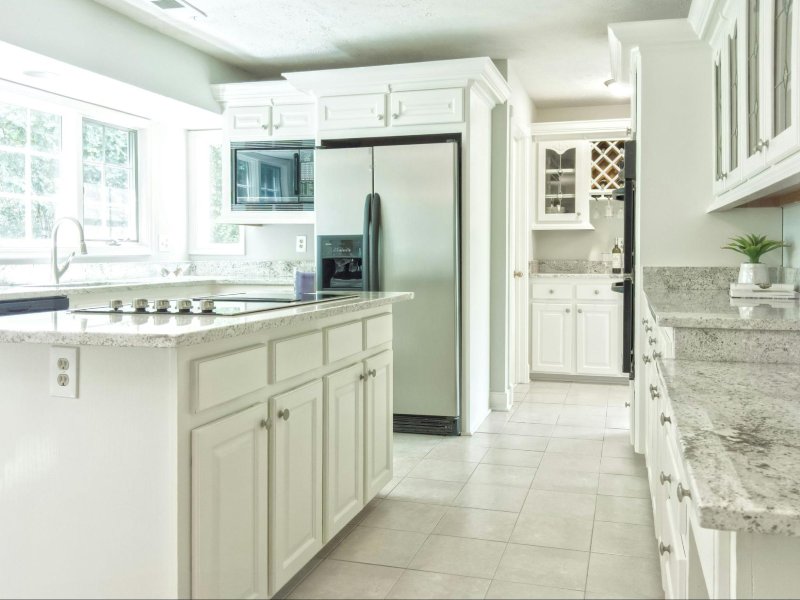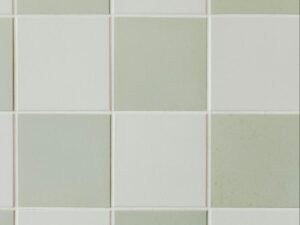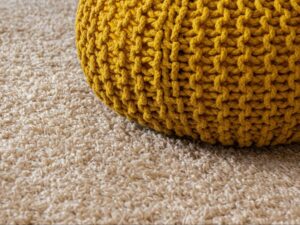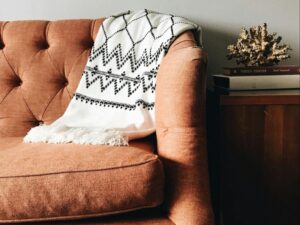Choosing the right flooring for your home is a significant decision that involves balancing aesthetics, durability, and practicality. Different rooms in your house have unique requirements based on factors like moisture exposure, foot traffic, and design preferences. This article will explore the key considerations for flooring installation in various rooms, focusing on kitchens, bathrooms, living areas, and bedrooms, to help you make informed decisions that enhance the functionality and beauty of your home.
Kitchens
The kitchen is often considered the heart of the home, where meals are prepared, and families gather. Given its high-traffic nature and exposure to spills, grease, and heavy footfall, choosing the right flooring for the kitchen is crucial.
Durability and Moisture Resistance: Kitchens are prone to spills and moisture, making it essential to choose flooring that can withstand these conditions. According to our fellow floor installation friends at Woodmaster Kitchens, vinyl flooring is an excellent choice for kitchens due to its water resistance, durability, and ease of cleaning. Another popular option is tile, particularly porcelain or ceramic, which is highly resistant to water and stains. These materials can handle the wear and tear of daily kitchen activities without showing signs of damage.
Ease of Maintenance: Kitchen floors should be easy to clean and maintain. Materials like vinyl and tile are low-maintenance, requiring only regular sweeping and occasional mopping. Avoid flooring options like hardwood that can be easily damaged by moisture or require frequent refinishing in high-traffic areas like the kitchen.
Comfort and Safety: Since you may spend a lot of time standing in the kitchen, comfort is another factor to consider. Cork flooring is a softer option that provides some cushioning underfoot, reducing fatigue during long cooking sessions. However, cork is less water-resistant, so it’s essential to seal it properly if used in the kitchen.
Aesthetic Appeal: The kitchen is also a design focal point in many homes, so aesthetics are important. Modern vinyl and tile options come in a wide variety of styles, colors, and patterns, allowing you to choose a look that complements your kitchen’s design. Whether you prefer the sleek look of large-format tiles or the warmth of wood-look vinyl, there’s a flooring option that can match your style.
Bathrooms
Bathrooms are unique in their flooring needs due to the constant exposure to moisture. The right flooring for a bathroom must be water-resistant, durable, and able to withstand humid conditions.
Waterproof Materials: Given the high levels of moisture in bathrooms, waterproof flooring is a must. Ceramic and porcelain tiles are among the best options, as they are completely waterproof and available in various styles and finishes. Luxury vinyl tile (LVT) is another excellent choice, offering water resistance with the added benefit of a softer feel underfoot compared to traditional tile.
Slip Resistance: Safety is a critical concern in bathrooms due to the risk of slips and falls. When selecting bathroom flooring, look for materials with slip-resistant surfaces. Textured tiles, for instance, provide better grip than smooth tiles, reducing the risk of accidents. Additionally, smaller tiles with more grout lines can offer extra traction, making them a safer choice for bathroom floors.
Heat Considerations: Bathrooms can benefit from the installation of underfloor heating systems, especially in colder climates. Materials like tile and stone are excellent conductors of heat, making them ideal for pairing with radiant heating systems. This combination not only adds a touch of luxury but also helps to keep the bathroom warm and comfortable.
Aesthetic Considerations: The bathroom is a space where you can get creative with your flooring choices. Whether you prefer the clean, modern look of white or gray tiles, the natural warmth of wood-look vinyl, or a bold pattern to make a statement, the options are endless. Consider how the flooring will complement other elements in the bathroom, such as the vanity, fixtures, and wall color, to create a cohesive design.
Living Areas (Living Room, Dining Room, Family Room)
Living areas are the spaces where you entertain guests, relax with family, and spend a significant portion of your time. The flooring in these rooms should combine style, comfort, and durability.
Warmth and Comfort: For living areas, comfort underfoot is often a priority. Hardwood flooring is a classic choice that brings warmth and elegance to any living space. It’s available in various wood species, finishes, and plank sizes, allowing you to customize the look to match your decor. If you prefer something softer, consider carpeting, which provides a plush, cozy feel, especially in family rooms where children may play on the floor.
Durability: Living areas experience varying levels of foot traffic, so durability is essential. Engineered hardwood is a more stable alternative to solid hardwood, offering better resistance to moisture and temperature changes while maintaining the look of real wood. Laminate flooring is another durable option that mimics the appearance of wood or stone at a lower cost and with less maintenance.
Sound Absorption: Noise can be a concern in living areas, especially in homes with open floor plans. Carpeting and cork flooring are excellent choices for sound absorption, reducing noise from foot traffic and making the space more serene. If you prefer hard flooring like wood or tile, area rugs can be used to soften the sound and add a layer of comfort.
Design Versatility: The flooring in living areas should complement the overall design of your home. Hardwood and laminate offer timeless appeal and can be paired with various decor styles, from traditional to contemporary. If you want to add a touch of luxury, consider natural stone flooring like marble or slate, which brings a sophisticated, upscale look to living spaces.
Bedrooms
Bedrooms are personal sanctuaries where comfort and relaxation are paramount. The right flooring in a bedroom should enhance the cozy, tranquil atmosphere that makes the space conducive to rest.
Softness and Warmth: Carpeting is a popular choice for bedrooms because of its softness and warmth underfoot. It provides a cushioned surface that is ideal for barefoot walking and helps to create a quiet, peaceful environment. If you prefer hard flooring, consider adding an area rug to provide that same softness around the bed.
Hypoallergenic Options: For those with allergies, hardwood or laminate flooring is often a better choice than carpeting, as these materials do not trap dust, pollen, or pet dander. They are also easier to keep clean, contributing to better indoor air quality.
Aesthetic Appeal: The bedroom is a space where you can express your style. Whether you choose the timeless elegance of hardwood, the contemporary look of laminate, or the cozy comfort of carpet, consider how the flooring complements the room’s overall color scheme and furnishings.
Temperature Considerations: Bedrooms should feel warm and inviting, especially during colder months. Carpeting provides natural insulation, helping to keep the room warm. If you prefer hard flooring, underfloor heating is an option to ensure the space remains comfortable year-round.
Conclusion
When selecting flooring for different rooms in your home, it’s important to consider the unique needs and functions of each space. Kitchens and bathrooms require durable, water-resistant materials that can withstand moisture and spills while living areas and bedrooms prioritize comfort, warmth, and aesthetic appeal. By carefully evaluating the specific requirements of each room, you can choose flooring that not only enhances the beauty of your home but also meets the practical needs of everyday life. Whether you opt for the durability of tile, the warmth of hardwood, or the softness of carpet, the right flooring can transform your space and provide long-lasting value.








